1. What is Audience Analysis?
Table of Contents
Understanding your audience isn't just the first step - it's everything when it comes to hitting it big. That's where audience analysis comes into play.
Let's put it this way: It doesn’t matter how refined your product is or how much you’ve polished your service. If you don’t know who you’re selling to, you might as well be yelling into a void. It’s all about understanding who your audience is, what they’re into, and how you can get on their radar in the right way.
For example, if you're selling snow boots but only targeting those living in tropical locations, you’re not going to see the sales you’re dreaming of, no matter how top-notch those boots are.
Let’s dive into what audience analysis is all about and why it’s a game-changer for your business.

Introduction to audience analysis
Audience analysis refers to gathering as much information as possible about the people who make up your audience to grasp who they are as individuals. It's about deeply understanding their behaviors, interests, and what really matters to them.
This overview gives a glimpse into audience analysis and what it entails, but it requires more depth to truly get it right. Yes, your business might cast a wide net, but honing in on your specific target audience for each campaign is key to ensuring your comms resonate each and every time. Within your audience, a more granular analysis will reveal smaller groups or 'communities' that exhibit shared affinities, interests, behaviors, and demographic traits that bind them together.
Going beyond surface-level data to collect detailed information about your audience transforms mere numbers and facts into actionable insights. These insights are crucial; they help tailor your business strategy to ensure your messages resonate more deeply and your marketing efforts are as effective as possible.
Understanding audience analysis: A definition
Getting to know your audience is crucial for crafting messages that resonate. Audience analysis involves dissecting and understanding your audience through four distinct lenses, including demographic, psychographic, situational, and behavioral analysis. These four main types of analysis offer a unique perspective, shedding light on different facets of your audience to inform and refine your comms strategy. Here's a closer look at the definitions and overviews of each type:
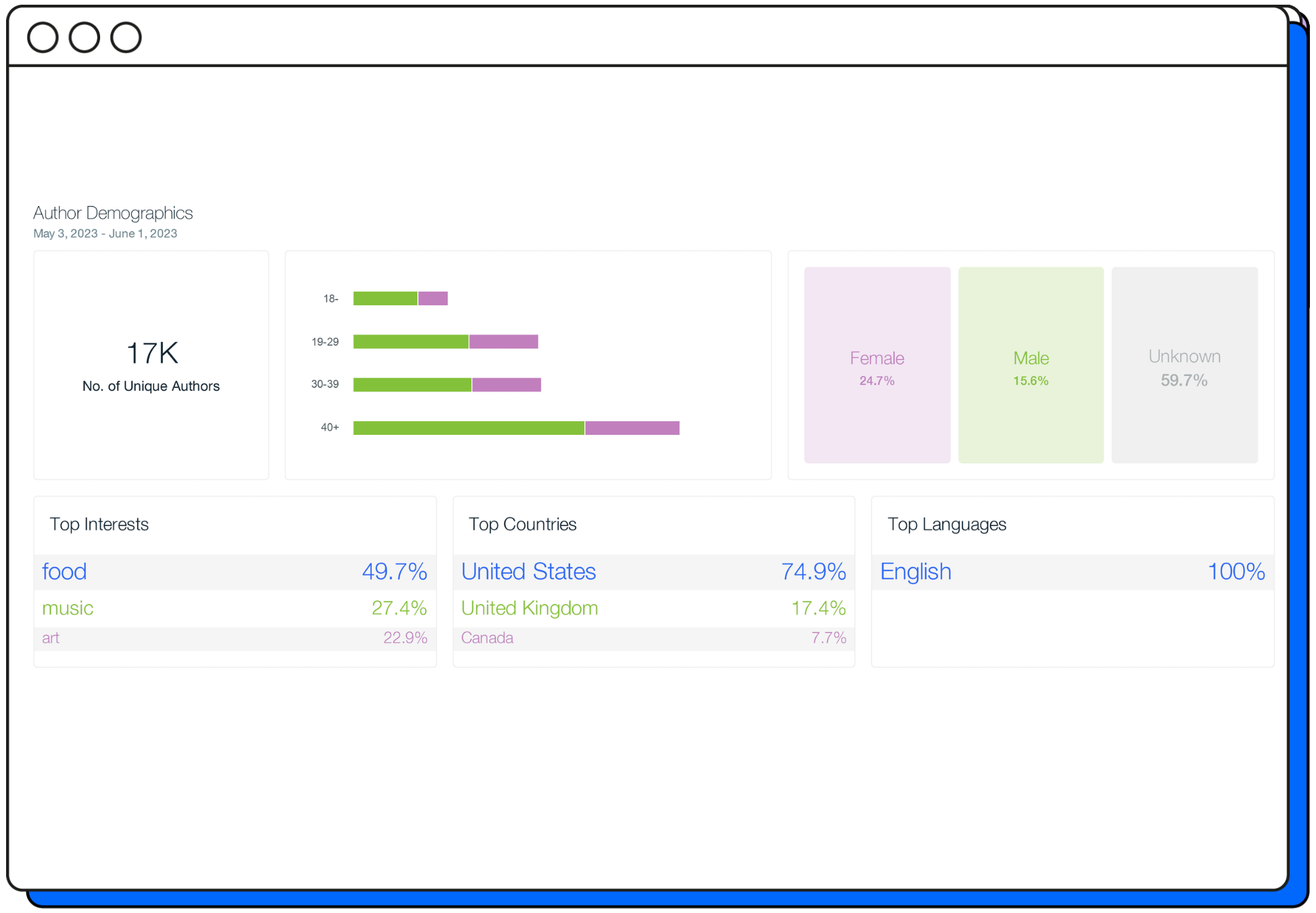
1. Demographic audience analysis
This type of analysis looks at the statistical aspects of an audience, such as age, gender, income level, education, ethnicity, and occupation. By understanding these characteristics, you can create content and messages that appeal to the particular demographic segments of your audience. Demographic analysis is often considered to be the most basic level in identifying who your audience is, allowing for more nuanced segmentation and targeted marketing efforts going forward.
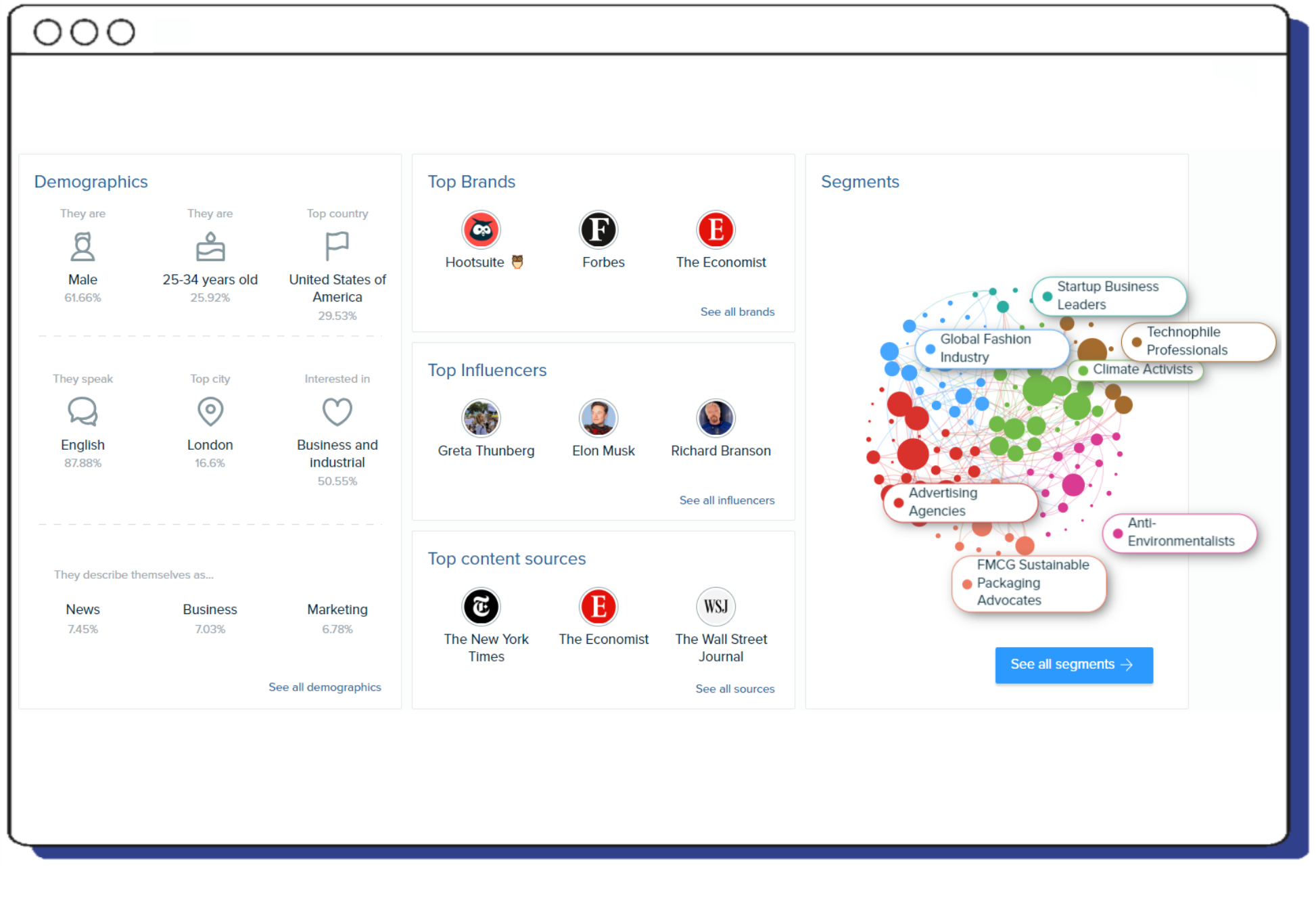
2. Psychographic audience analysis
While demographics tell you "who" your audience is, psychographics tell you "why" they may be interested in your product or service. This analysis delves into your audiences' attitudes, interests, personality, values, opinions, and lifestyle. Psychographic information is invaluable for understanding the motivations behind consumer behavior, enabling marketers to design campaigns that resonate on a deeper emotional level with their target audience.
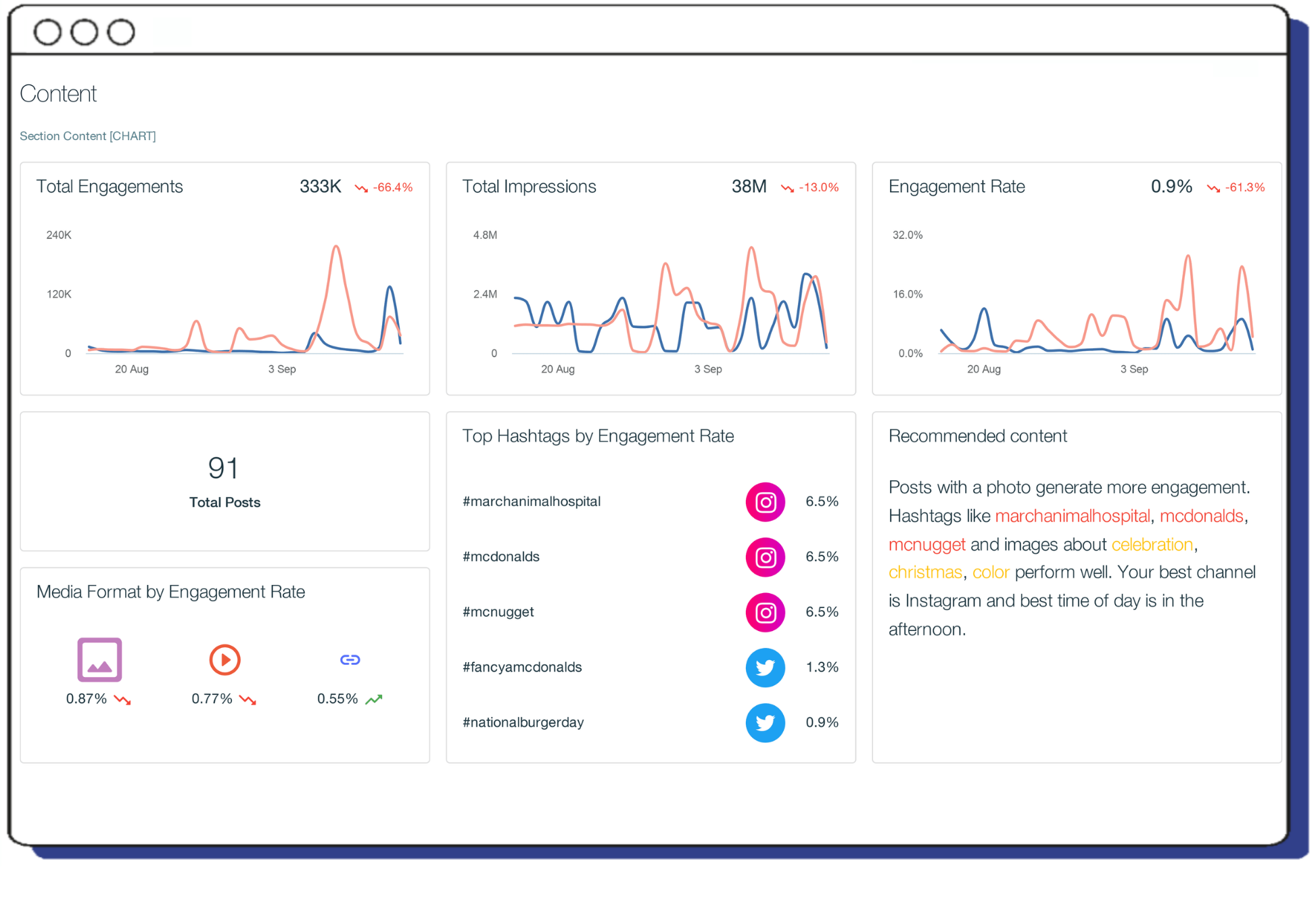
3. Situational audience analysis
Situational analysis considers the context in which your audience will receive your message. It examines the "when", "where", and "how" your audience engages with your content. This type of analysis involves understanding the audience's current environment, specific needs or pain points at that moment in time, and how their situation affects their perception of your message. Situational analysis is critical for timing your comms effectively and ensuring that your message is relevant to the audience's current circumstances.
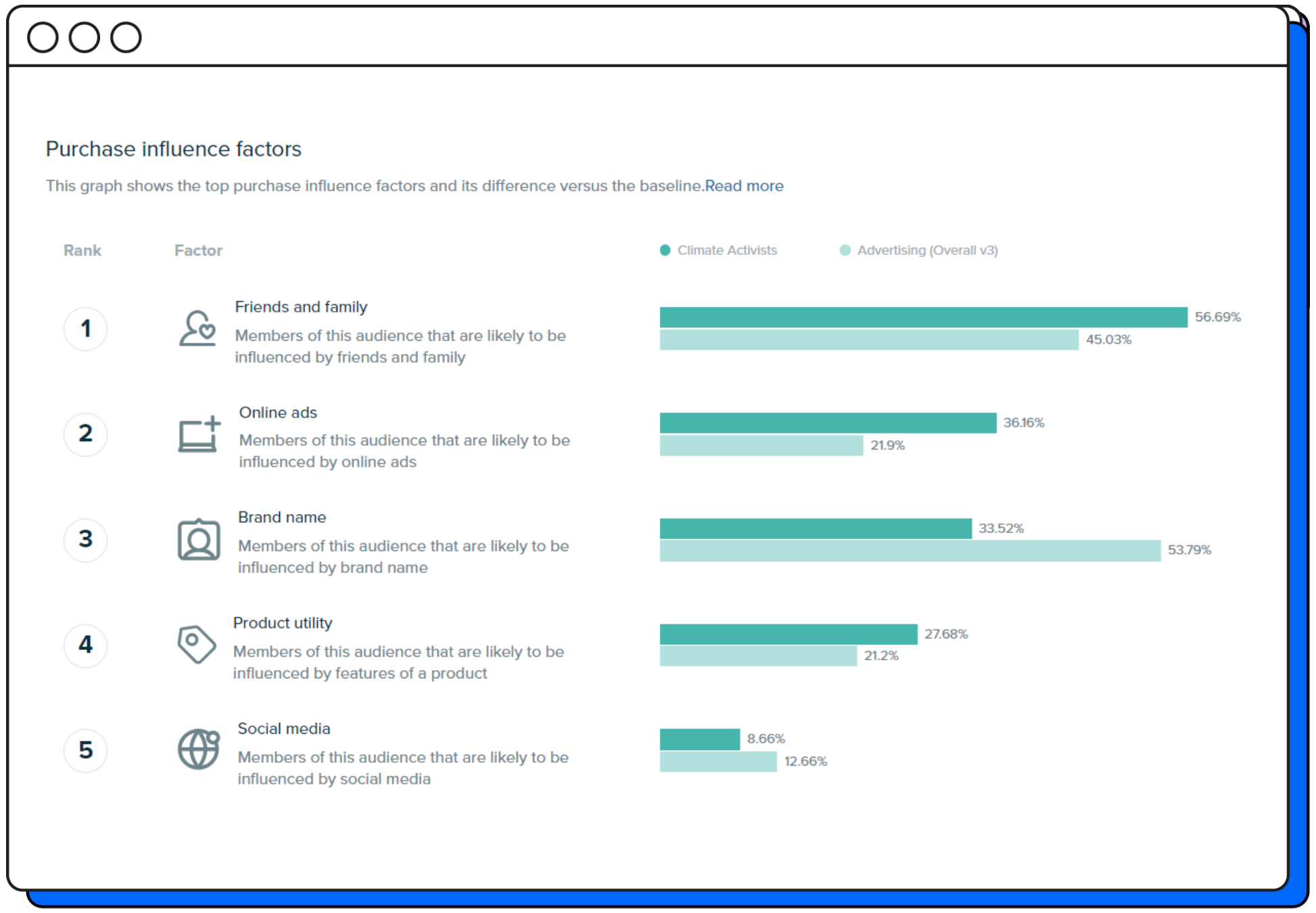
4. Behavioral audience analysis
Behavioral analysis dives into the actions and behaviors of your audience, such as their purchasing habits, product usage, and online activities. It looks at the patterns in how they interact with your brand or similar brands, including their loyalty, frequency of purchases, and engagement rates with different channels. This type of analysis can help tailor marketing strategies to fit the actual behaviors of your target audience, making promotional efforts more effective.
The importance of target audience analysis
We previously touched on the importance of digging deeper when it comes to conducting audience analysis, by why exactly is target audience analysis important?
Analyzing and differentiating your target audience is crucial for creating effective marketing strategies, and it’s vital to consider it something separate from broader market analysis.
Let’s break it down:
- Target market analysis: Involves identifying the general group of consumers that might be interested in your product or service. It’s about understanding the broader market environment in which your business operates and exists. Target market analysis includes sizing up the competition, understanding market trends, and recognizing the potential market segments that exist. It's a macro view that helps you to identify where opportunities lie within the general population or business landscape.
- Target audience analysis: Dives deeper into the specific segment of the market you aim to reach. It's about getting to know the individuals who make up that market segment on a personal level – their behaviors, preferences, needs, challenges, and how your product or service fits into their lives. This analysis goes beyond basic demographics to include psychographic and behavioral insights, ensuring that your messaging resonates on a more personal and emotional level. It's about quality over quantity, focusing on the people most likely to convert rather than the market at large.
The distinction between target market and target audience analysis is crucial for several reasons:
- Precision in messaging: Understanding your audience allows for more tailored, relevant, and impactful marketing messages. It ensures that your content speaks directly to the needs, desires, and pain points of those most likely to engage with your brand.
- Resource efficiency: By focusing your efforts on those most likely to respond, you can allocate your marketing resources more efficiently, resulting in a higher ROI (return on investment).
- Customer experience: When you understand your target audience deeply, you can align and tailor your products, services, and experiences to better meet their expectations, leading to higher satisfaction and loyalty.
- Competitive edge: In a crowded market, the ability to resonate deeply with a specific group can be a significant differentiator. It's not just about reaching people; it's about reaching the right people, at the right time, in ways that matter to them.
The role of target market segmentation in audience analysis
So, what do we mean exactly when we talk about segmentation? Here at Pulsar, we stand firm that true business success hinges on looking beyond conventional methods of audience analysis and social listening. Why? Because the world of audience engagement is complex and nuanced.
Segmentation is not just a part of audience analysis; it's a game-changer. It allows for marketing that's not just broad strokes but finely tuned to the individual needs and preferences of distinct groups within your target market. By embracing a comprehensive approach like Audience Intelligence, we can dive deeper, uncovering the subtle differences that make each segment unique and individual.
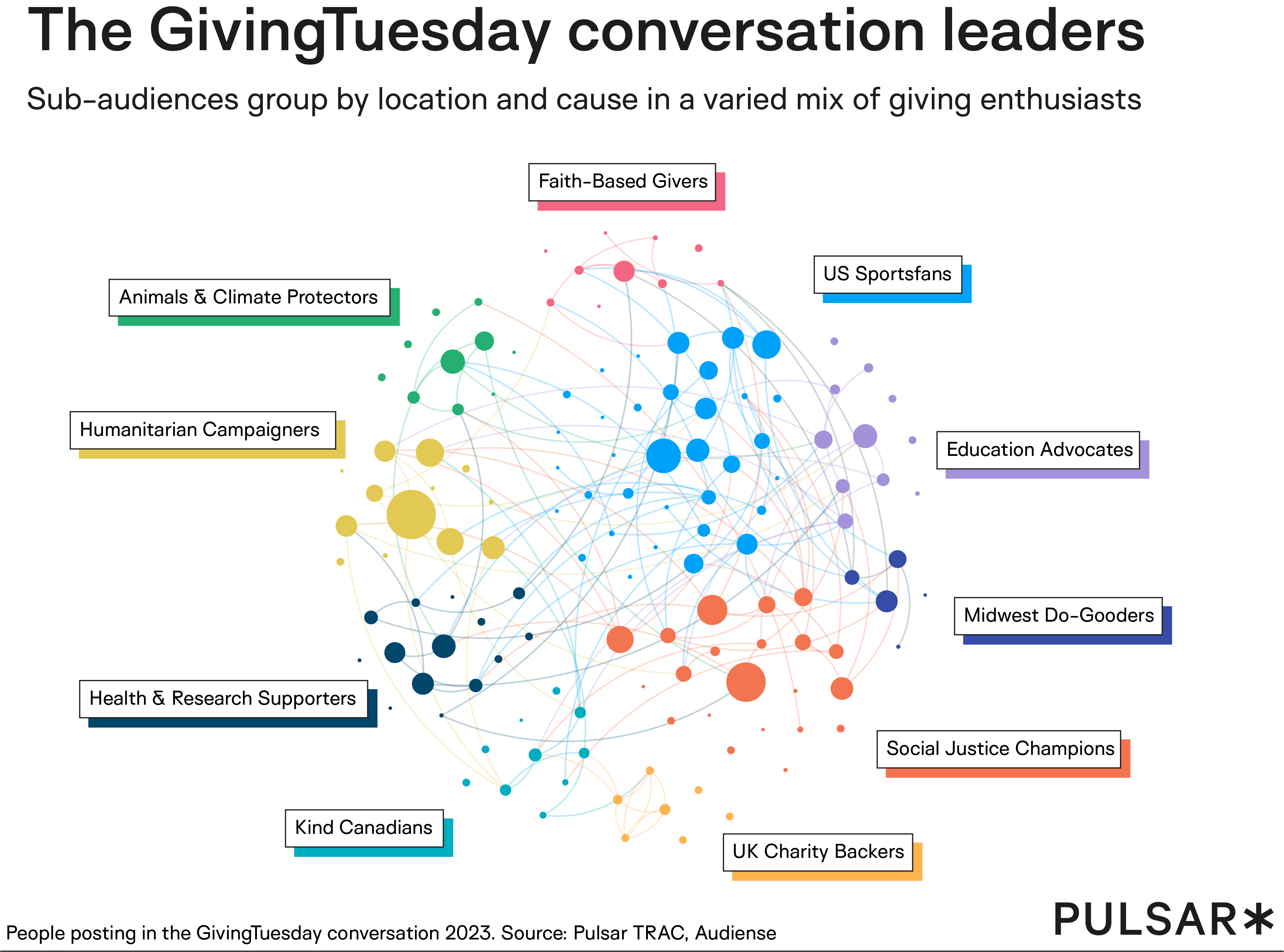
Take, for example, our tool, Pulsar TRAC. It's not just about observing your target market from a distance. It's about zooming in and identifying subgroups or communities within your audience that share specific characteristics or values. This is where the magic happens.
And here's a crucial insight: Different communities can engage with the same topic in vastly different ways. By segmenting your audience, you gain the ability to uncover these differences, understand how various groups relate to your brand, and discover the most effective ways to reach them. It's about finding where your brand fits into their world and speaking their language in a way that resonates and inspires action.
Segmentation reveals the diverse tapestry of your audience, allowing for targeted strategies that are more likely to convert. It's not just about reaching more people; it's about reaching the right people in the right way and at the right time.
Conducting target market analysis for strategic insights
Conducting a thorough analysis of your target market allows you to identify potential opportunities and challenges. Such analysis enables you to tailor your approach to meet your market's needs and wants. Here’s how to conduct a detailed analysis:
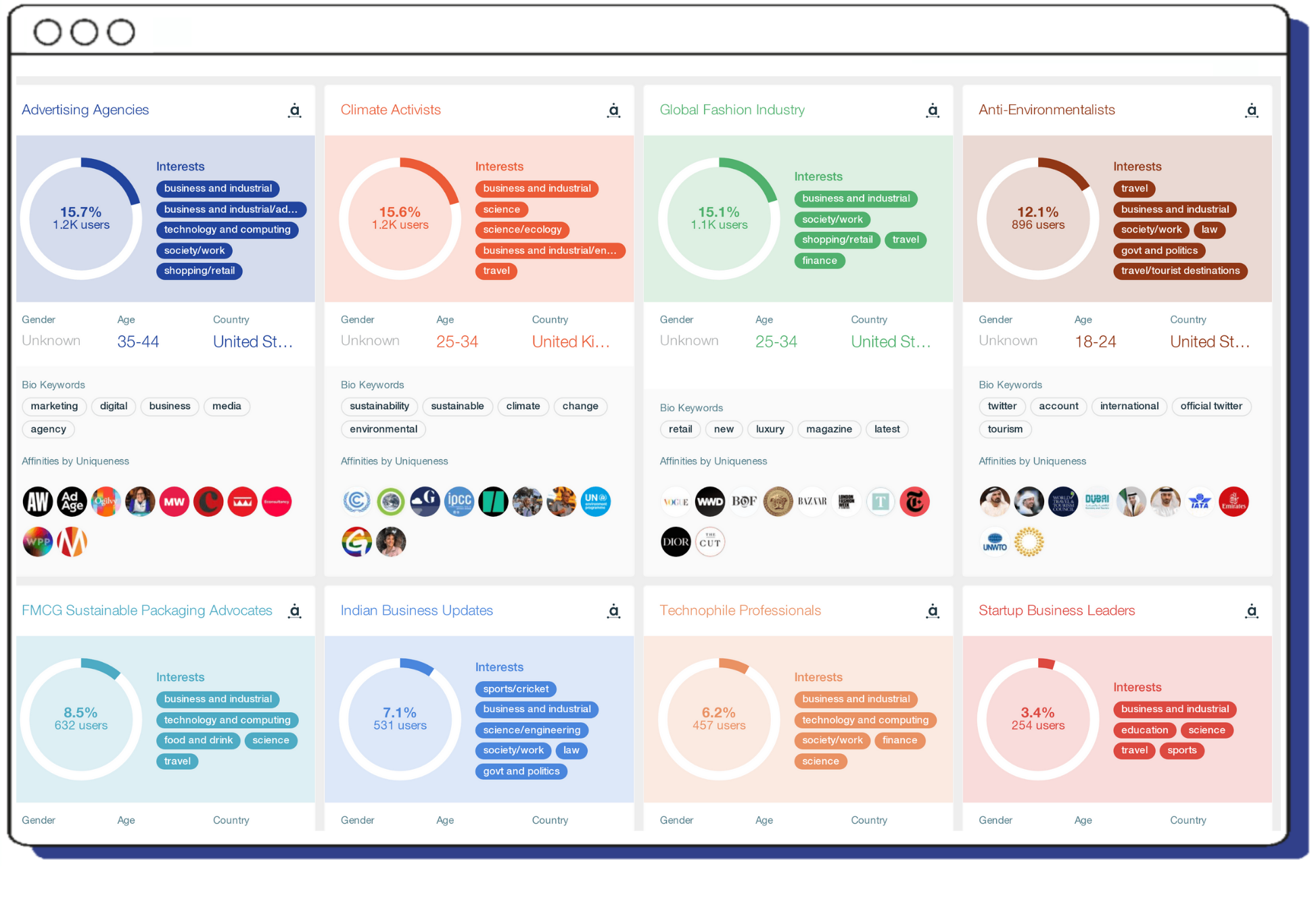
1. Define your target market
It's impossible to meet the needs of your market effectively if you don't truly understand who your audience is and what matters to them. Start by clearly defining who your target market is. Consider factors like demographics, psychographics, geography, and behavior. Nuanced Audience Intelligence tools like Pulsar TRAC offer instant, real-time audience data all on one dashboard for your ease.
2. Analyze market needs and wants
Next, it's essential to dive into grasping the specific needs, wants, and pain points of your target market. What are they looking for in a product or service? What problems do they need solved?
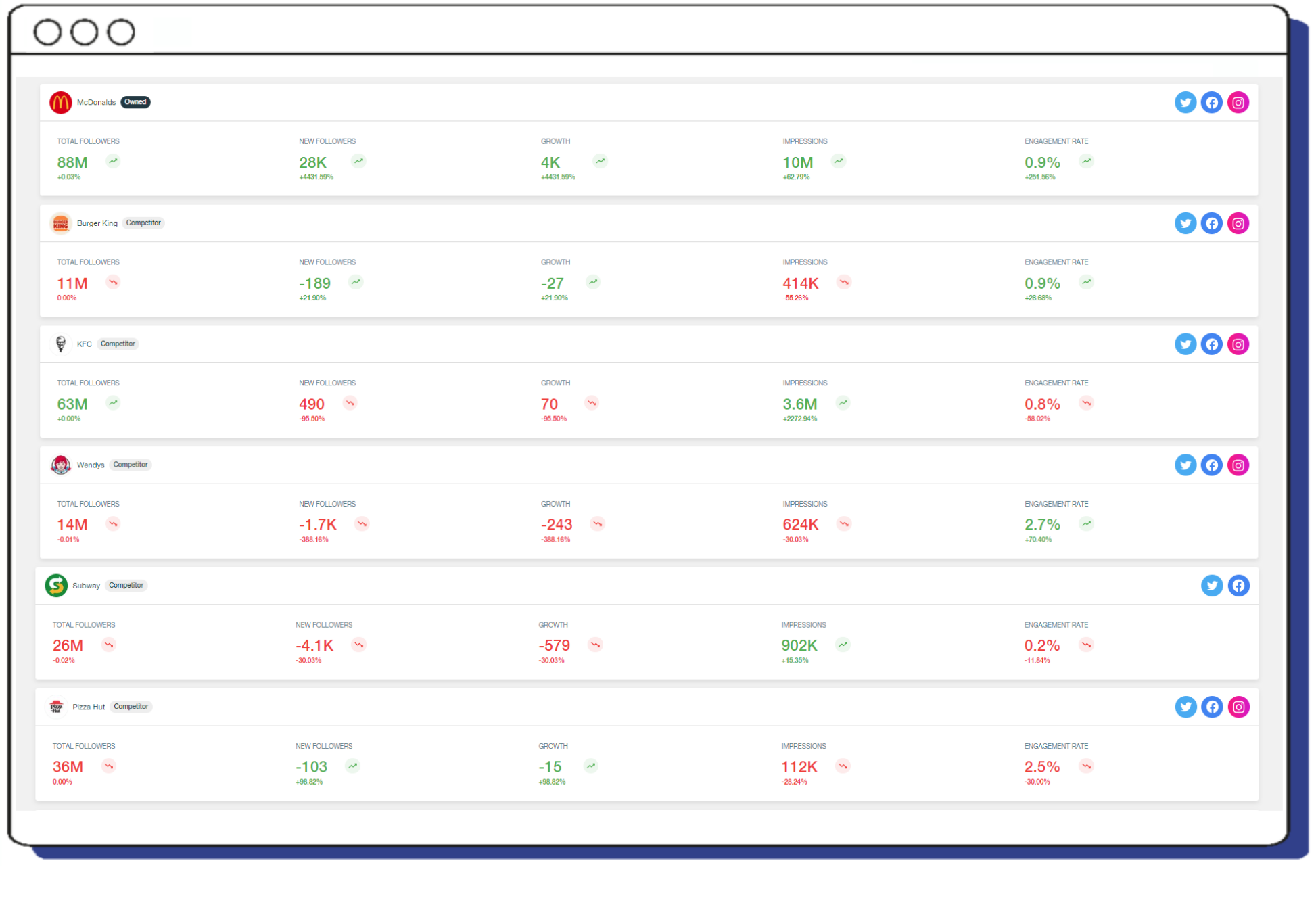
3. Evaluate the competition
Identify who your competitors are and what they offer. Analyze their strengths and weaknesses and understand their market positioning. Competitor analysis will help you identify gaps in the market that your business could fill, as well as competitive threats to be aware of.
4. Assess market trends
Stay informed about broader trends affecting your target market, including industry advancements and shifts in consumer behavior. Trend analysis can help you anticipate market needs and stay ahead of the curve.
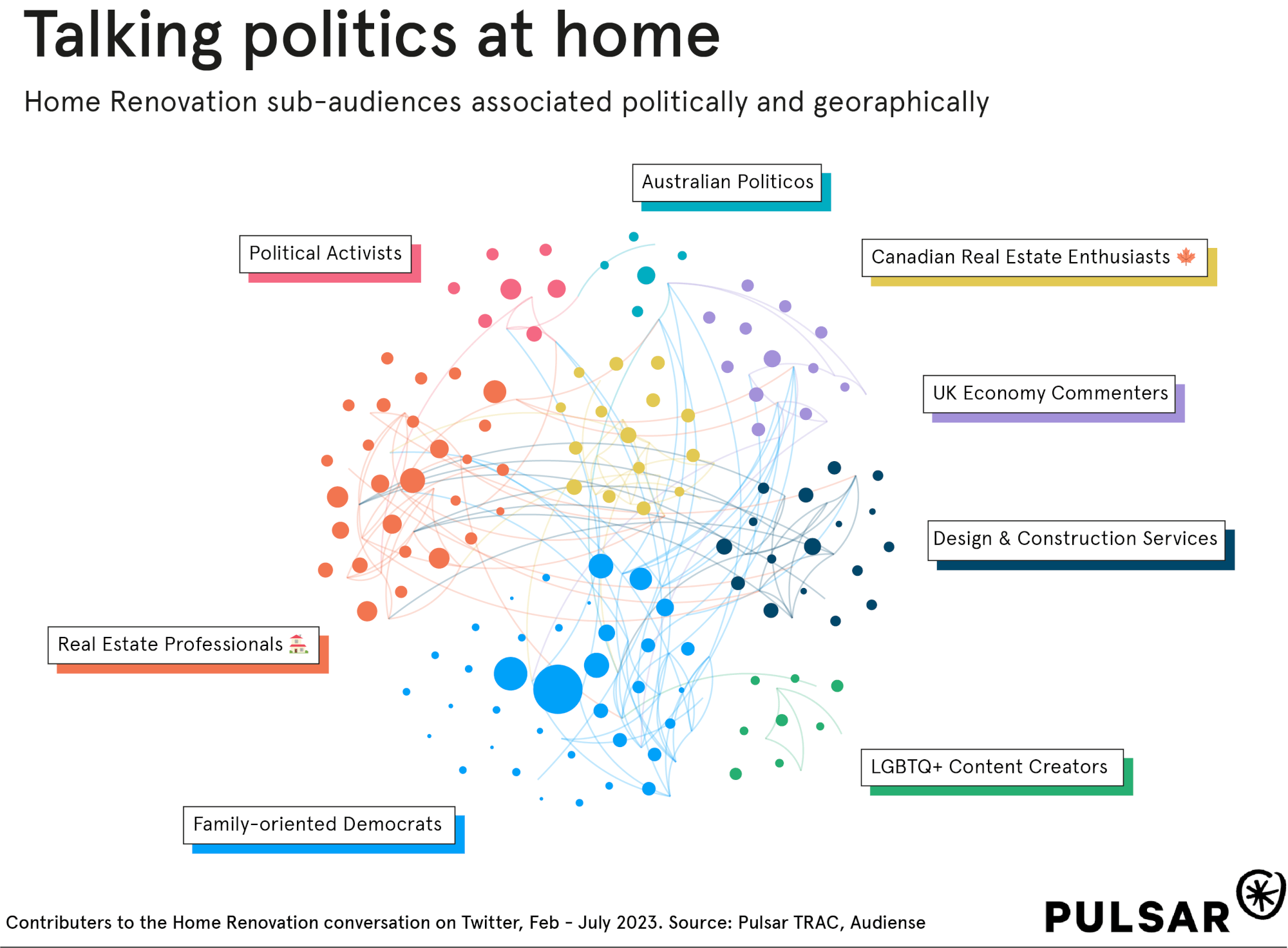
5. Segment your market
Break down your broader target market into smaller, more homogenous segments. Consider segmenting by demographics, buying behavior, or needs. Market segmentation allows for more targeted and effective marketing strategies.
6. Analyze market size and potential
Estimate the size of your target market and its potential for growth. Look at the number of potential customers, the value of the market, and trends indicating how the market may expand or contract in the future.
7. Identify opportunities and challenges
Based on your analysis, pinpoint the key opportunities your business can capitalize on and any potential challenges you may face. Opportunities could include unserved or underserved market segments, while challenges might involve competitive pressures or market saturation.
8. Develop strategic insights
Finally, synthesize your findings into actionable strategic insights. These should guide your business strategy, from product development to marketing and sales approaches. Insights might relate to product innovation, market entry strategies, or customer experience improvements.
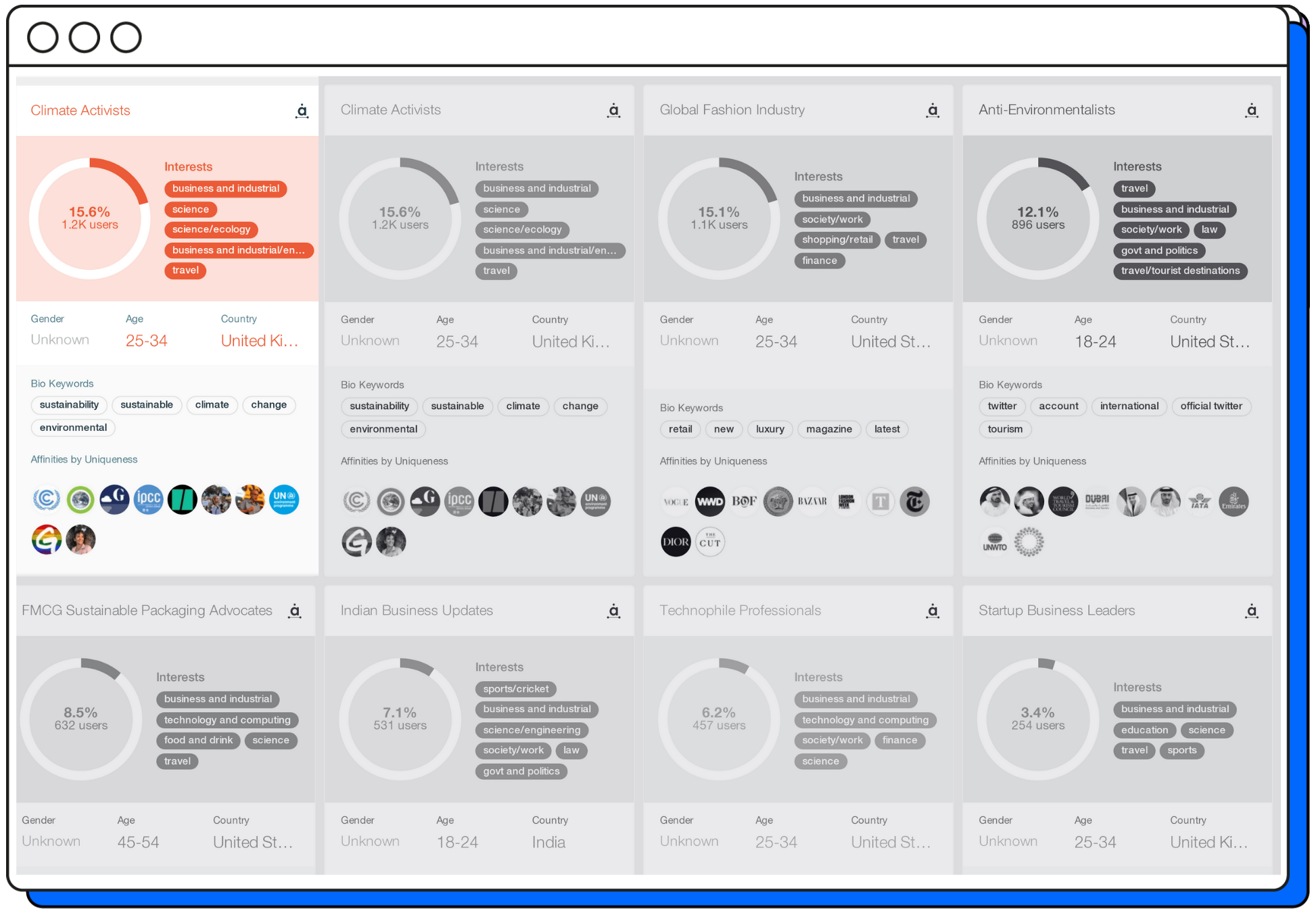
Creating an effective audience profile
Creating winning audience profiles transcends basic demographic information - they should delve into the behaviors, preferences, and motivations that drive consumer actions. But how can you compile these insights into actionable audience profiles? This process is crucial for informing product development, tailoring content strategies, and crafting campaigns that resonate with audiences.
- Gathering data: Collect data through various channels - social media interactions, website analytics, and more. Each data point offers a piece of the broader puzzle.
- Segmentation: Break down your broad audience into smaller, manageable segments based on shared characteristics, including age groups, buying behaviors, or interest levels in specific topics.
- Interpreting data: Use the data collected to identify patterns and trends. What does your audience care about? How do they prefer to receive information? What challenges are they facing?
Leveraging tools for deeper audience analysis
While marketers can, of course, conduct their audience analysis manually, why would they? Tools and platforms streamline the process, offering more nuanced insights. For example, Pulsar provides layers of real-time data analysis, capturing the dynamism of consumer behavior as it unfolds. This level of analysis helps marketers facilitate a deeper, more immediate understanding of audience dynamics as they occur.
Transitioning insights into audience profiles
The next step is to distill these insights into audience profiles. These profiles serve as archetypes for your marketing strategies, embodying the needs, preferences, and behaviors of your segments.
- Creating buyer personas: Beyond general audience profiles, you can also create detailed buyer personas to represent ideal customers. These personas are enriched with insights into the motivations and decision-making processes of your segments, guiding more personalized engagement strategies.
Conclusion: The value of audience analysis in shaping business strategy
Effective audience analysis is at the heart of successful marketing strategies. By understanding the depth and breadth of your audience’s preferences and behaviors, you can create audience profiles that genuinely reflect their needs and interests. Tools like Pulsar augment this process by providing real-time insights, but the core goal remains the same: to deeply understand your audience and engage them in the most impactful way.
